Knocker uppers: Waking up the workers in industrial Britain
- Published
Silent footage of a knocker upper at work
As the clocks go forward for the start of British Summer Time, many of us will rue the loss of an hour in bed. But how did people get to work on time before alarm clocks?
Until the 1970s in some areas, many workers were woken by the sound of a tap at their bedroom window. On the street outside, walking to their next customer's house, would be a figure wielding a long stick.
The "knocker upper" was a common sight in Britain, particularly in the northern mill towns, where people worked shifts, or in London where dockers kept unusual hours, ruled as they were by the inconstant tides.
"They used to come down the street with their big, long poles," remembers Paul Stafford, a 59-year-old artist who was raised above a shop in Oldham.
"I would sleep with my brother in the back room upstairs and my parents slept in the front.
"[The knocker upper] wouldn't hang around either, just three or four taps and then he'd be off. We never heard it in the back, though it used to wake my father in the front."
While the standard implement was a long fishing rod-like stick, other methods were employed, such as soft hammers, rattles and even pea shooters.
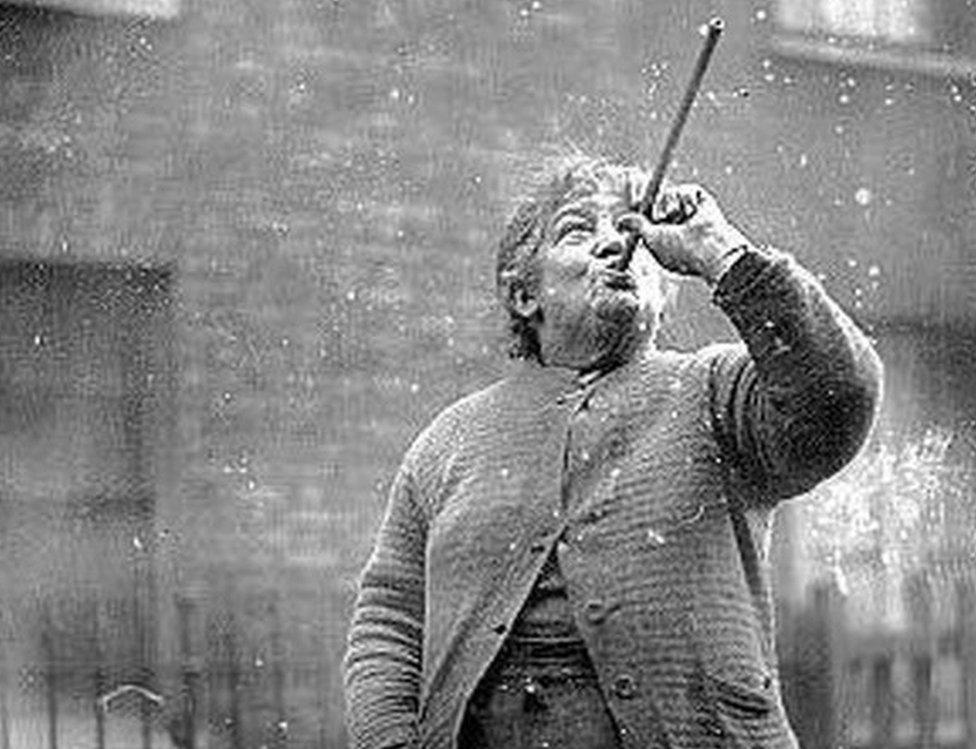
Mary Smith charged sixpence a week to wake her clients in east London
But who woke the knocker uppers? A tongue-twister from the time tackled this conundrum:
We had a knocker-up, and our knocker-up had a knocker-up
And our knocker-up's knocker-up didn't knock our knocker up
So our knocker-up didn't knock us up
'Cos he's not up.
"The knocker uppers were night owls and slept during the day instead, waking at about four in the afternoon," says author Richard Jones.
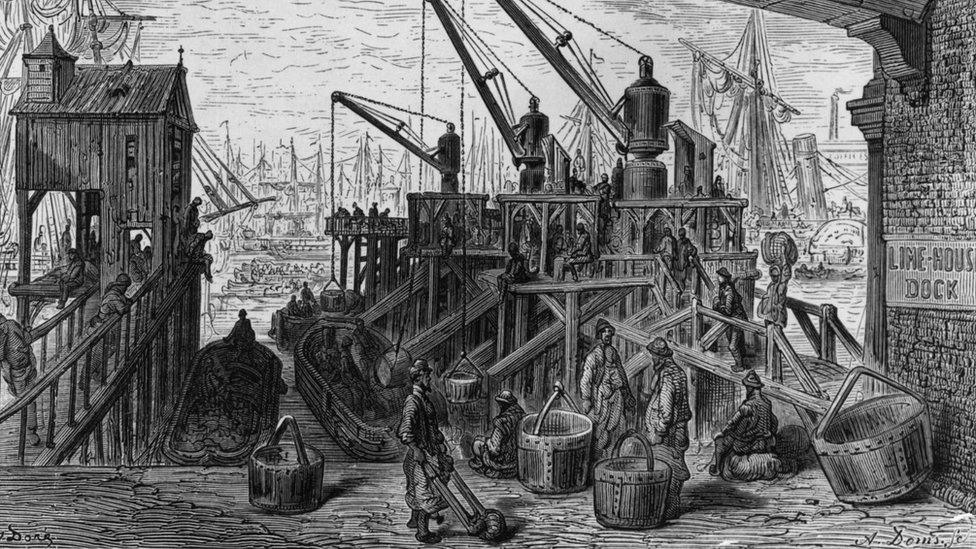
Dockers by the River Thames had to be up early to load and unload cargo at high tide
One problem knocker uppers faced was making sure workers did not get woken up for free.
"When knocking up began to be a regular trade, we used to rap or ring at the doors of our customers," Mrs Waters, a knocker upper in the north of England told an intrigued reporter from Canada's Huron Expositor newspaper in 1878, external.
"The public complained of being disturbed... by our loud rapping or ringing; and the knocker-up soon found out that while he knocked up one who paid him, he knocked up several on each side who did not," she continued.
The solution they hit on was modifying a long stick, with which to tap on the bedrooms windows of their clients, loudly enough to rouse those intended but softly enough not to disturb the rest.
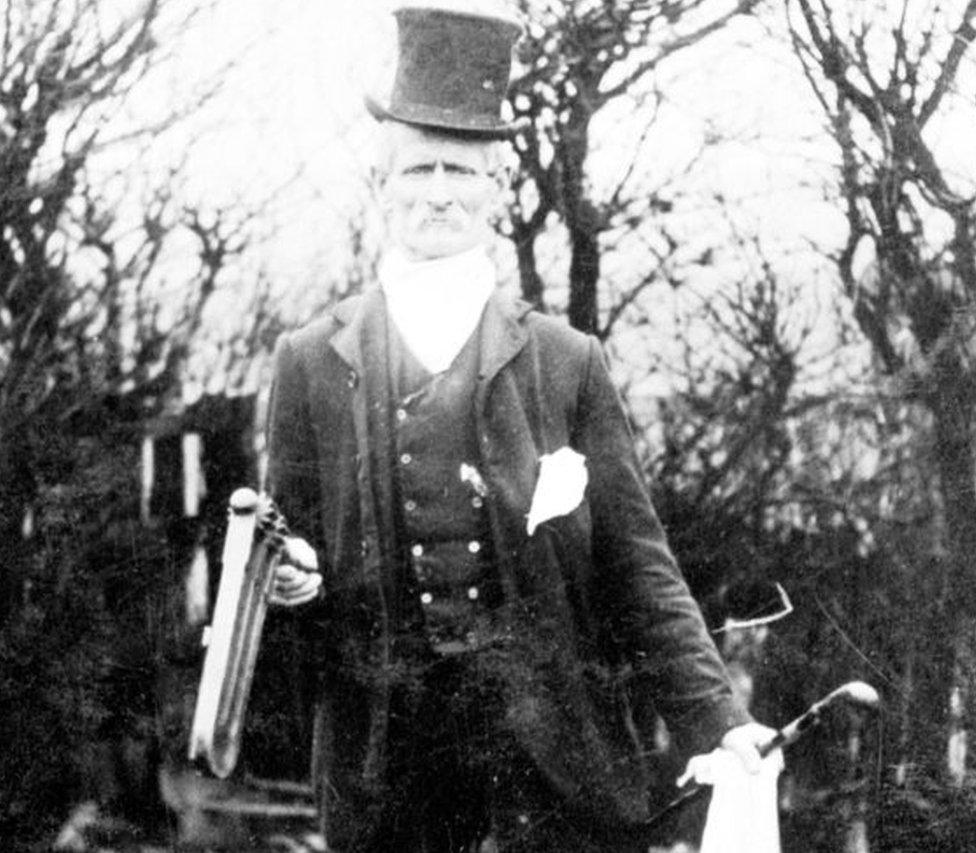
Knocker uppers operated in colliery villages waking men up for their shifts
The trade spread rapidly across the country, particularly in areas where poorly paid workers were required to work shifts but could not afford their own watches.
Charles Dickens references knocking up in Great Expectations and it also features in the story of the Jack the Ripper murders in east London.

Knocking up in Dickens
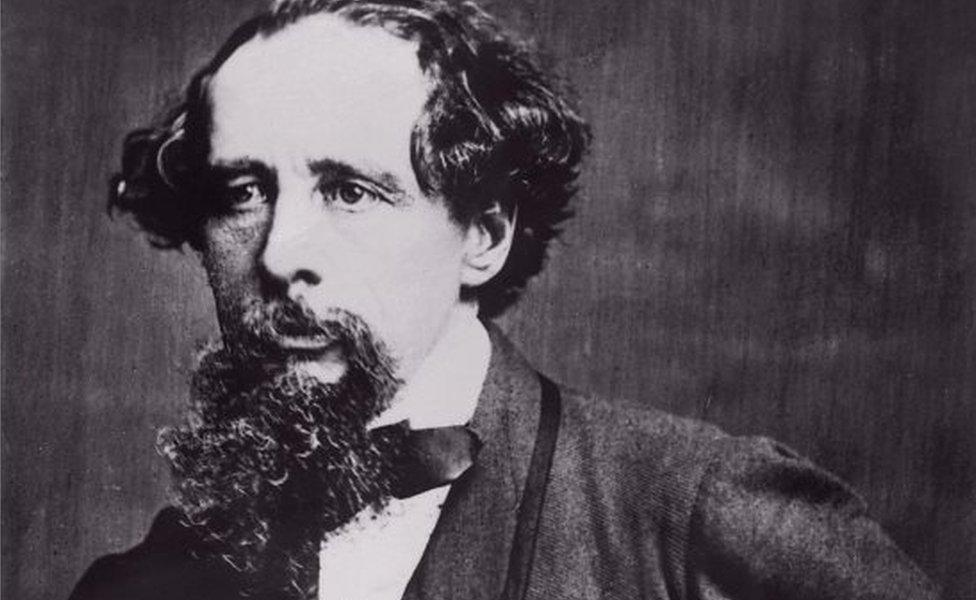
Knocking up was so commonplace Dickens made passing reference to it in his novel Great Expectations.
The orphan Pip takes up the tale in chapter six:
"As I was sleepy before we were far away from the prison-ship, Joe took me on his back again and carried me home.
"He must have had a tiresome journey of it, for Mr Wopsle, being knocked up, was in such a very bad temper that if the Church had been thrown open, he would probably have excommunicated the whole expedition, beginning with Joe and myself."

Robert Paul, the man who discovered the body of the Ripper's first victim - Mary Nichols, described how the policeman he informed saw no reason to let it detain him from his knocking up duties, Mr Jones says.
The Knocker-Upper Man song by Mike Canavan and performed by Joe Stead
"I saw [a policeman] in Church-row, just at the top of Buck's-row, who was going round calling people up," Mr Paul told the inquest. "And I told him what I had seen, and I asked him to come, but he did not say whether he should come or not. He continued calling the people up, which I thought was a great shame, after I had told him the woman was dead."
Knocker uppers were not only confined to industrial cities. Caroline Jane Cousins - affectionately known as Granny Cousins, external - was born in Dorset in 1841 and became Poole's last knocker upper, waking brewery workers each morning until retiring in 1918.
Another well known knocker upper was Mrs Bowers, of Greenfield Terrace in Sacriston, County Durham.
She was a familiar sight out on the streets with her dog Jack. She woke each day at 1am and left her warm bed to wake the miners on the early shift.
She began knocking up during World War One and continued for many years, according to Beamish, the Living Museum of the North.
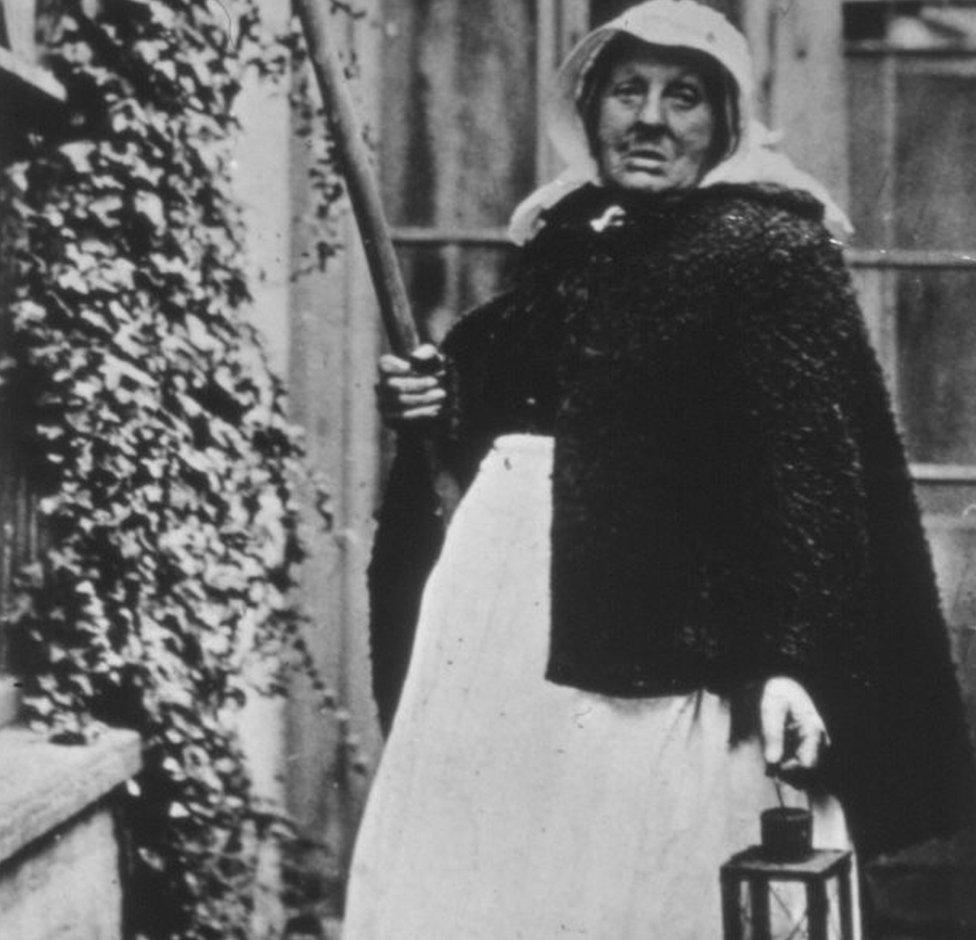
Granny Cousins knocked up Poole's residents between 1901 and 1918
The trade also ran in families. Mary Smith, who used a pea shooter, was a well-known knocker upper in east London and her daughter, also called Mary, followed in her mother's footsteps. The latter is widely believed to have been one of the capital's last knocker uppers, according to Mr Jones.
With the spread of electricity and affordable alarm clocks, however, knocking up had died out in most places by the 1940s and 1950s.
Yet it still continued in some pockets of industrial England until the early 1970s, immortalised in songs by the likes of folk singer-song writer Mike Canavan.
"Through cobbled streets, cold and damp, the knocker-upper man is creeping.
"Tap, tapping on each window pane, to keep the world from sleeping..."

Mrs Bowers and her dog Jack were a familiar sight in Sacriston, County Durham